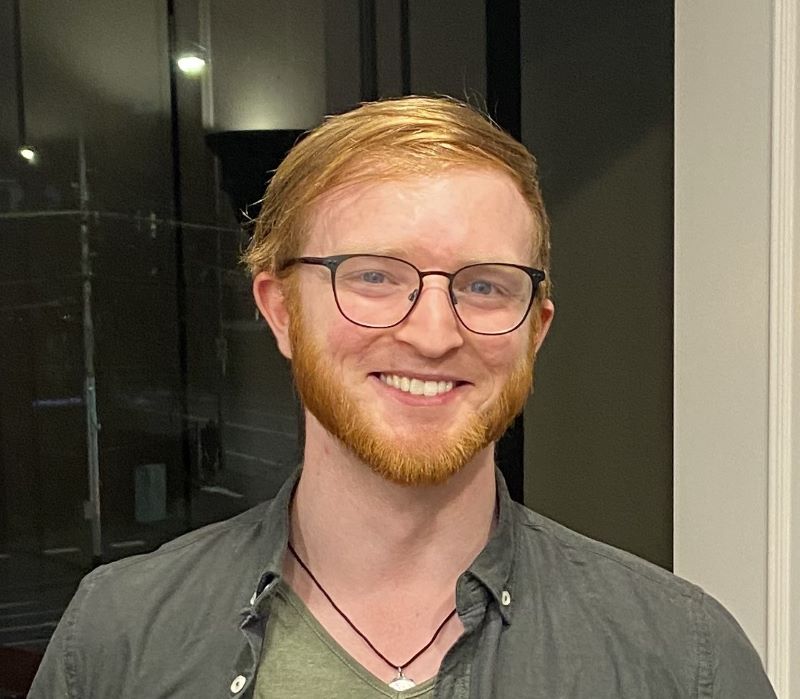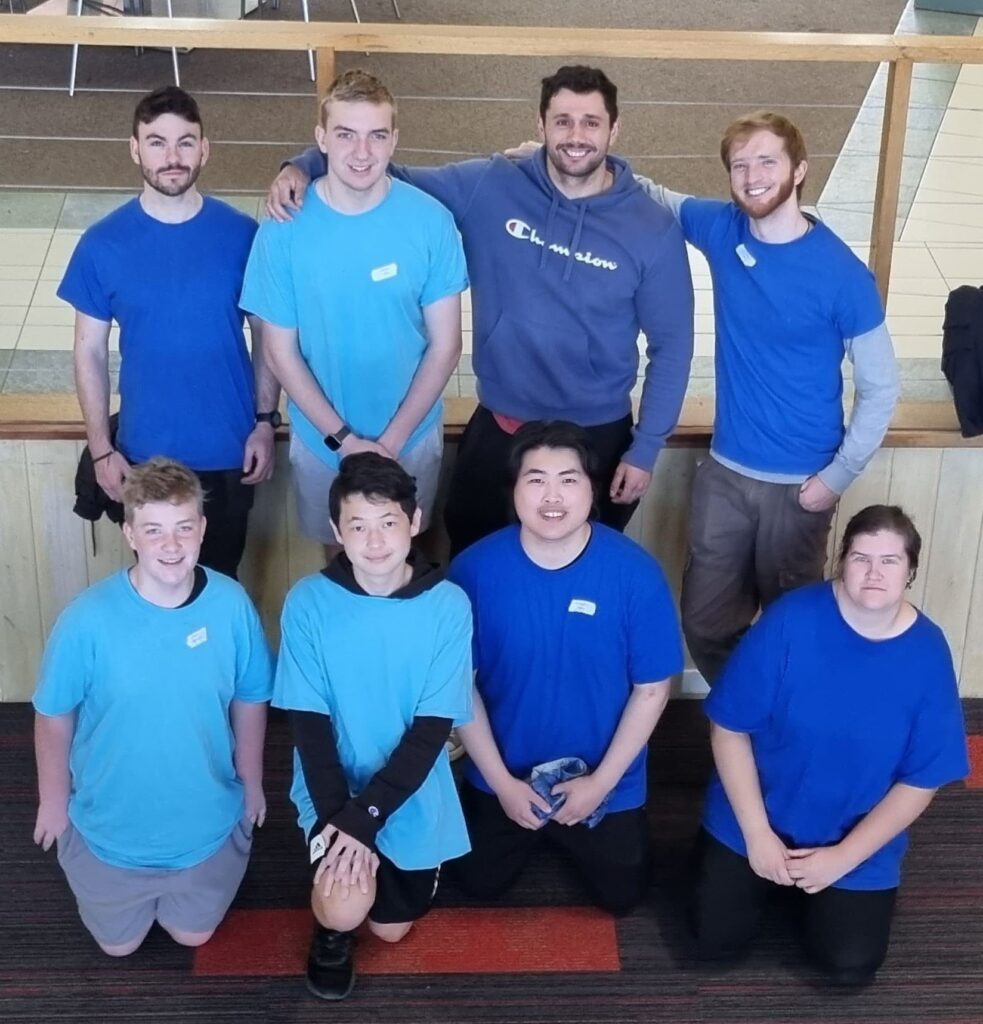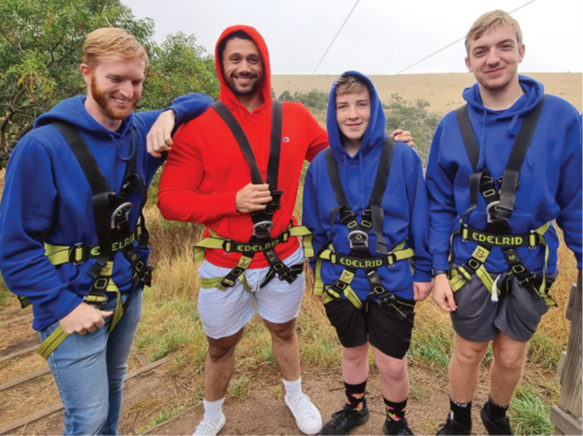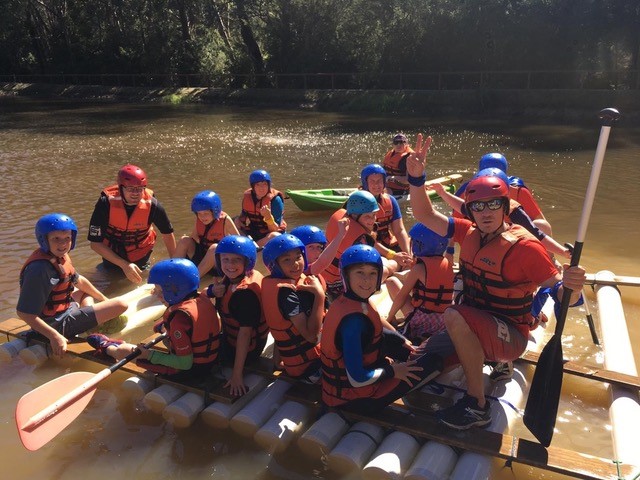In 2023 Ben Ingliss received an HFA Volunteer Award. He has been very involved in the Haemophilia Foundation Victoria (HFV) ‘Blue Shirts’ youth leadership program for many years and talked to HFA about his experiences and hopes for the program.

Hi, my name is Ben. I have moderate haemophilia A and I have been a youth leader for 6 years
At HFV we’ve been building a youth leadership team. It started off initially that we noticed we were losing people from our camp programs when they reached that teenager/young adult age. And we noticed that we weren’t really giving them a space in these programs. At the camps the kids go and do the kids thing and the adults go and do the adult thing and the teenagers were in this awkward in-between space.
They weren’t feeling engaged and they didn’t feel like they had a place, so they weren’t showing up. I was approached about this and I had some ideas, and we put together a team with a couple of us in that age range, who love the community and love the programs, but wanted to be getting a little more out of it.

At HFV we’ve been building a youth leadership team
Over the years the youth team has grown and expanded. Initially we would just turn up and help out but now, collaboratively as a team, we’ve made a code of conduct, a handbook, a set of expectations, different roles for the team, and how we want to interact in different programs. We have lots of different ideas that we’re running through the HFV Committee to increase youth engagement.
The really powerful thing about it is that the youth team isn’t this thing that HFV is doing for the youth. We’ve been given a space to make something for ourselves where we can make decisions that are going to affect us, and we can have input into HFV. That’s important for me and the younger members of the team, because we’re going to be running this community someday.

We’ve been given a space to make something for ourselves
It gives us a chance to build our capacity and practice the sort of skills that are going to be necessary to keep the community strong and deal with the developing needs of the bleeding disorder community, which are changing so quickly these days.
A major goal for me is the longevity of the program – to set up something for when I need to step down and someone else is going to step up to take that role. So, part of the planning of the team has been setting up a hierarchy.
You’ve got younger people who haven’t really been on a program before. They’re testing out if they want to be on the team and practicing and being mentored by other people.
Then we’ve got people who’ve been to a couple of programs and they know the deal. They’re helping the little ones learn.
And then people higher up who are planning programs and building that documentation.
And that gradual build up will hopefully result in everyone moving up the chain within the team to the point that anyone really can take over for me if they want to.

Being part of the Youth Team is also really fun and rewarding
We’re really trying to build this to be something that members of the team can put on a resume – ‘I think I’m really good for this job because I’ve been on this team and I’ve learned these skills’. A big part of leadership is getting that chance to learn and practice and realise your strengths and your weaknesses.
We’re already seeing the 10-year-old kids at camp talking excitedly about hoping to get onto the team at some point. We recently had a youth camp where we had between 18 and 21 participants. it’s a real testament to these guys and girls with bleeding disorders – and siblings – in the youth team. They are role models. And there’s something really powerful in getting to interact with people of similar ages where you can relate to their experience. Even with kids five years younger, our experience is already so different.
It’s great program and I’m really proud of what we’ve achieved together from it.
Ask your local Foundation about camps and their youth activities. If you don’t have their contact details, you can find them on the HFA website.
Haemophilia Foundation Australia acknowledges the Traditional Owners and Custodians of Country throughout Australia, the land, waters and community where we walk, live, meet and work. We pay our respects to Elders past and present and extend that respect to all Aboriginal and Torres Strait Islander peoples.
Sign up for the latest news, events and our free National Haemophilia magazine